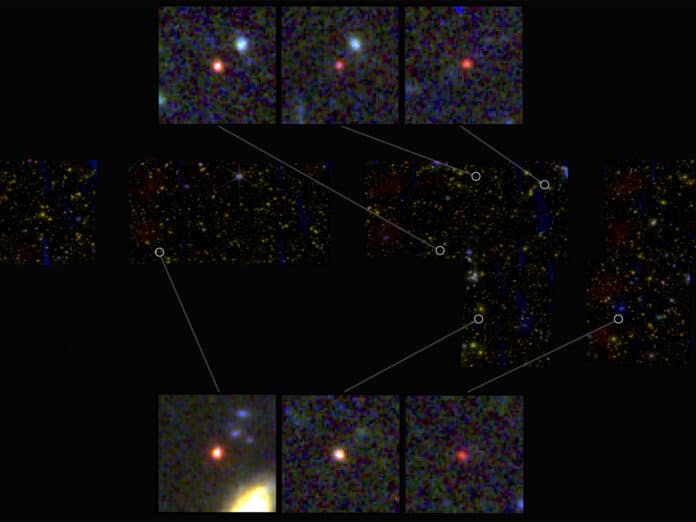Using the first dataset released from NASA’s James Webb Space Telescope, an international team of scientists discovered six massive galaxies in the early universe. These objects are as mature as the Milky Way when the universe was only 3% of its current age, about 500-700 million years after the Big Bang.
The discovery is challenging scientists’ understanding about the origins of galaxies in the universe.
Joel Leja, assistant professor of astronomy and astrophysics at Penn State, who modeled light from these galaxies, said, “These objects are way more massive than anyone expected. We expected only to find tiny, young, baby galaxies at this point, but we’ve discovered galaxies as mature as our own in what was previously understood to be the dawn of the universe.”
“This is our first glimpse back this far, so it’s important that we keep an open mind about what we are seeing. While the data indicates they are likely galaxies, I think there is a real possibility that a few of these objects turn out to be obscured supermassive black holes. Regardless, the amount of mass we discovered means that the known mass in stars at this period of our universe is up to 100 times greater than we had previously thought. Even if we cut the sample in half, this is still an astounding change.”
These newly discovered six galaxies are far more massive than anyone expected. They have stellar masses as high as ~ 1011 solar masses. It has been difficult to find massive galaxies at even earlier times, as the Balmer break region, which is needed for accurate mass estimates, is redshifted to wavelengths beyond 2.5 μm.
Leja said, “The revelation that massive galaxy formation began extremely early in the universe’s history upends what many of us had thought was settled science. We’ve been informally calling these objects ‘universe breakers’—and they have been living up to their name so far.”
It would be necessary to either change the cosmological models or reevaluate the scientific theory of galaxy formation in the early universe, which holds that galaxies began as small clouds of stars and dust and became larger over time in order to account for such a high quantity of mass. Either hypothesis necessitates a major change in how we perceive the universe’s origin.
Leja said, “We looked into the very early universe for the first time and had no idea what we were going to find. It turns out we found something so unexpected it creates problems for science. It calls the whole picture of early galaxy formation into question.”
“When we got the data, everyone just started diving in, and these massive things popped out fast,” Leja said. “We started modeling and tried to figure out what they were because they were so big and bright. My first thought was we had made a mistake, and we would just find it and move on with our lives. But we have yet to find that mistake, despite a lot of trying.”
“One way to confirm the team’s finding and alleviate any remaining concerns would be to take a spectrum image of the massive galaxies. That would provide the team data on the true distances and also the gasses and other elements that made up the galaxies. The team could then use the data to model a clearer picture of what the galaxies looked like, and how massive they truly were.”
Journal Reference:
- Ivo Labbe, A population of red candidate massive galaxies ~600 Myr after the Big Bang, Nature (2023). DOI: 10.1038/s41586-023-05786-2
